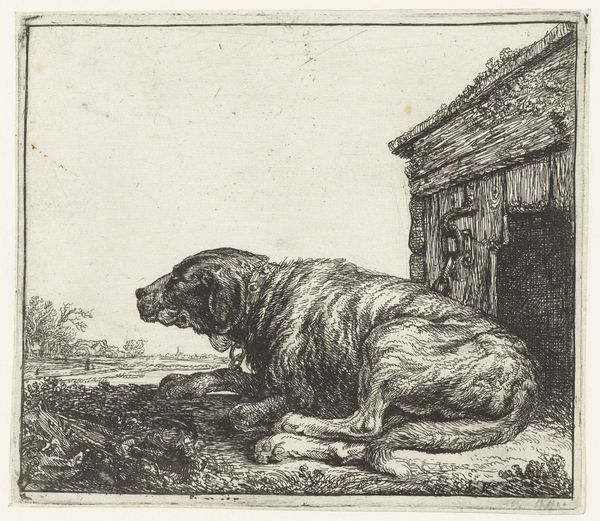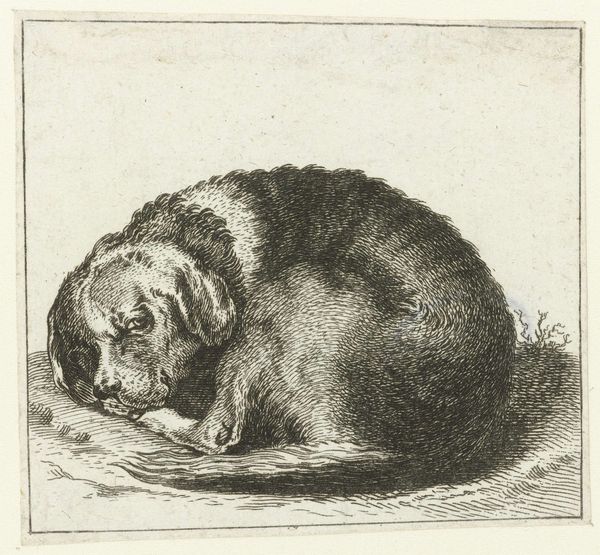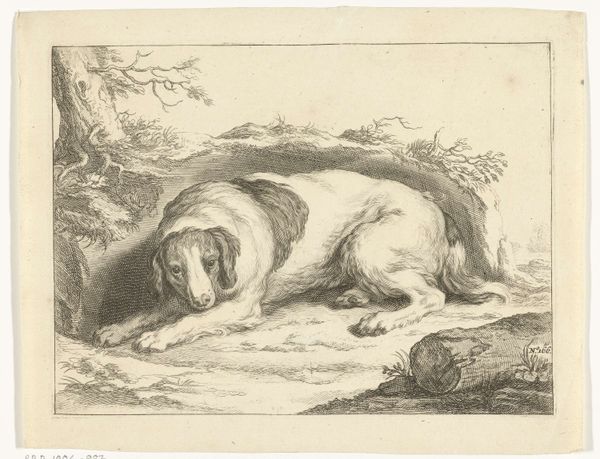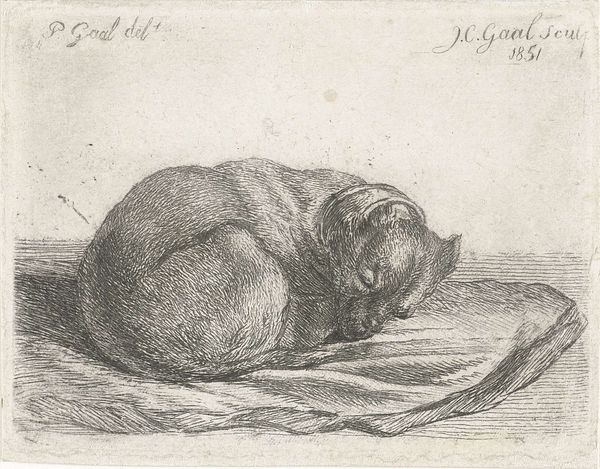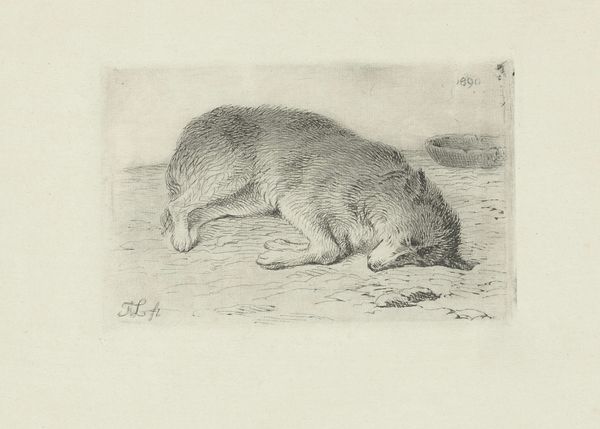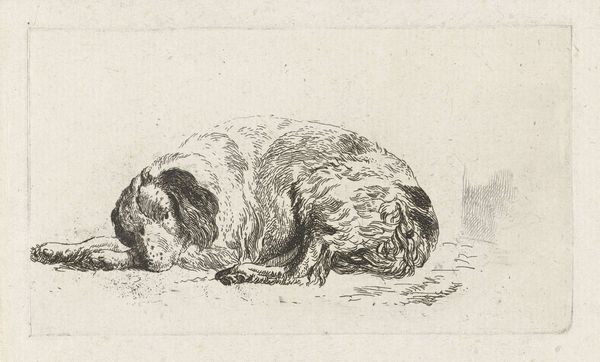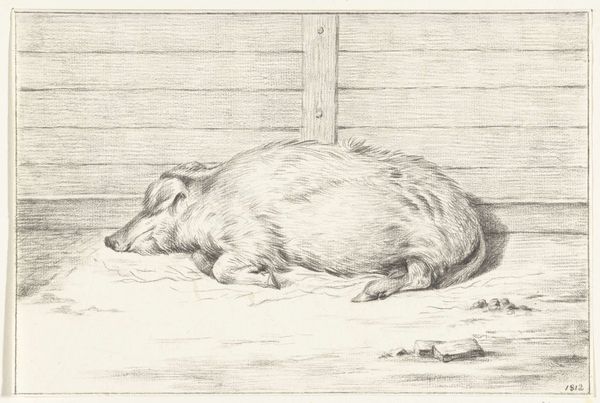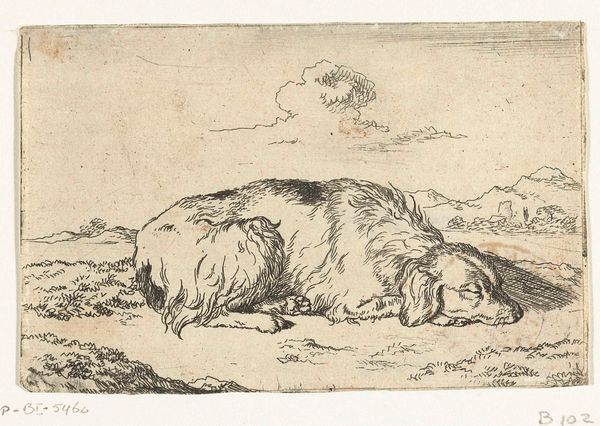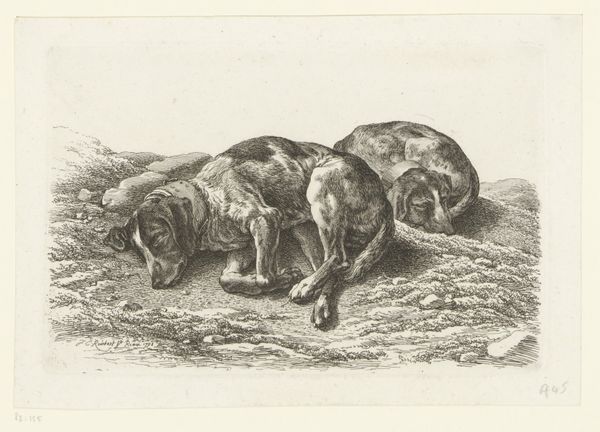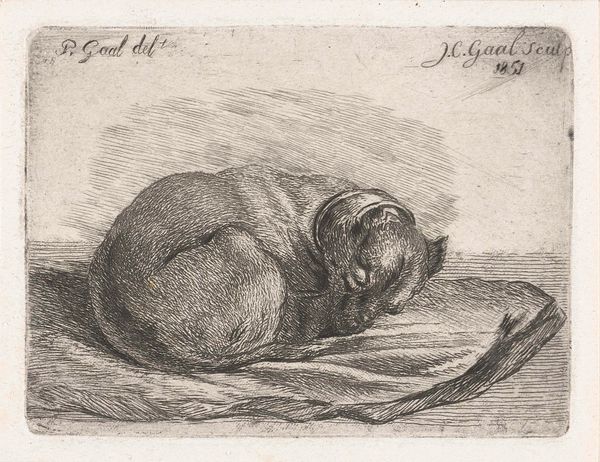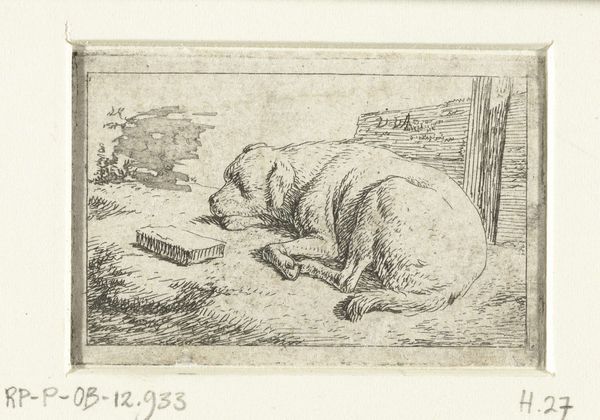
print, etching
#
16_19th-century
# print
#
etching
#
dog
#
landscape
#
romanticism
#
realism
Dimensions: height 81 mm, width 110 mm
Copyright: Rijks Museum: Open Domain
Curator: Fréderic Thédore Faber created this etching titled "Slapende Hond" or "Sleeping Dog" in 1837. It is currently held in the Rijksmuseum collection. My first impression is a sense of melancholy, this isn't just a relaxed creature. Editor: An etching of this scale demands close examination. Note the linear precision Faber achieves, particularly in the dog's fur and the coarse texture of the building behind it. The process is crucial here: the physical act of etching allows for incredibly fine detail. Do you see how Faber exploits this material potential? Curator: Indeed. Dogs are symbols of loyalty and vigilance but here the typical symbolism is subverted. A sleeping dog feels vulnerable, even mournful. Note how the dog's form occupies much of the composition, the foreground texture emphasizing the dog’s proximity to a humble shelter. A strong evocation of reliance. Editor: Absolutely. And this reliance reflects back on the broader context of Romanticism. One recognizes an elevation of humble subjects: a celebration of the rural workforce—often dependent upon these animals. Consider how industrialisation reshaped social relations, prompting artistic focus on simple forms of labor and reliance. Curator: An insightful observation, placing this work squarely in a wider historical conversation about labour and shifting societal roles. We can consider it an idealized version of reliance or even as a melancholic marker of the loss of that idealized condition, don't you agree? Editor: Interesting. This shifts our consideration to broader consumption. Prints like this circulated widely and were not only documents, they were marketable. Faber wasn’t only etching a dog. He was producing a commodity—for perhaps the burgeoning middle class who desired images of sentimental, rural life. The "dog" here becomes the point of transaction, no? Curator: I'd concur that it is likely many meanings layered one upon another, perhaps each of equal measure or prominence. One could argue then, that Faber was acutely tuned to the symbolic and economic currents of his time. Editor: Precisely. Exploring the materials, means of production, and potential consumption expands our perception. Curator: Likewise, considering the artwork’s emblematic weight brings nuance to understanding its meaning, offering broader narratives about shifting historical moods and personal or emotional resonances. Editor: A perfect partnership then to reveal layers in such a piece!
Comments
No comments
Be the first to comment and join the conversation on the ultimate creative platform.

